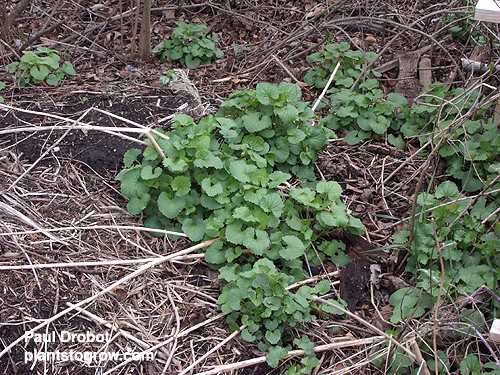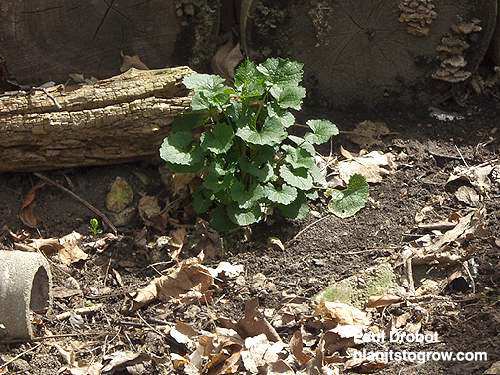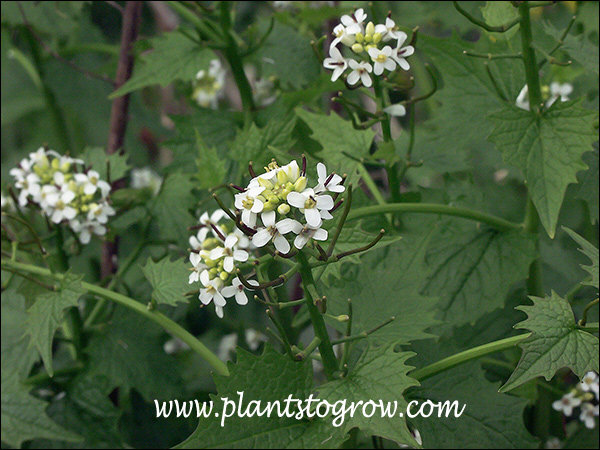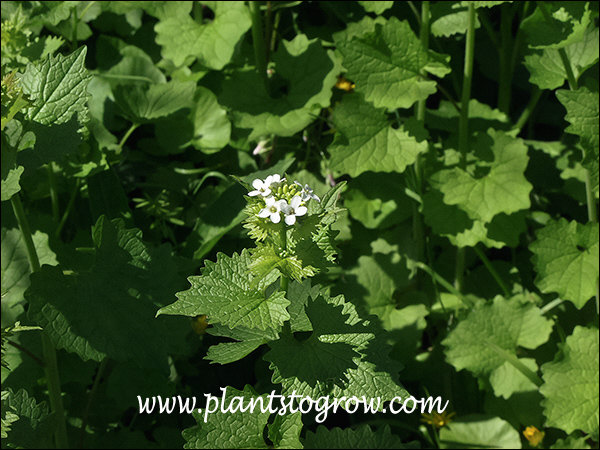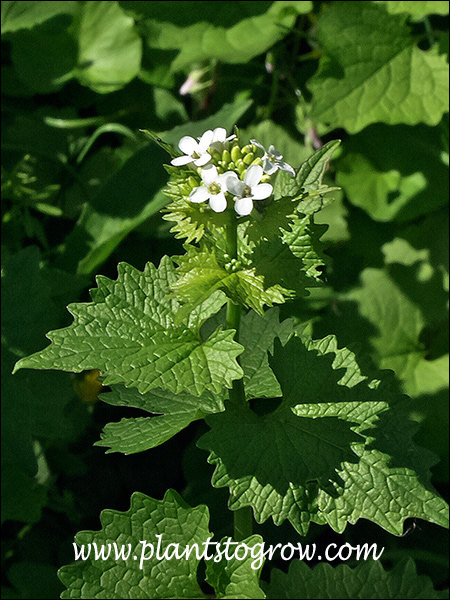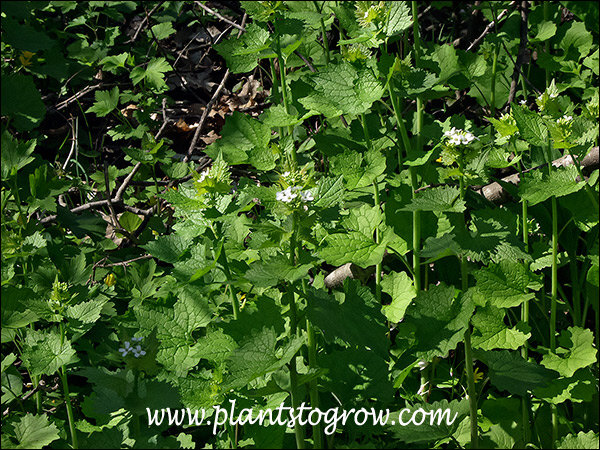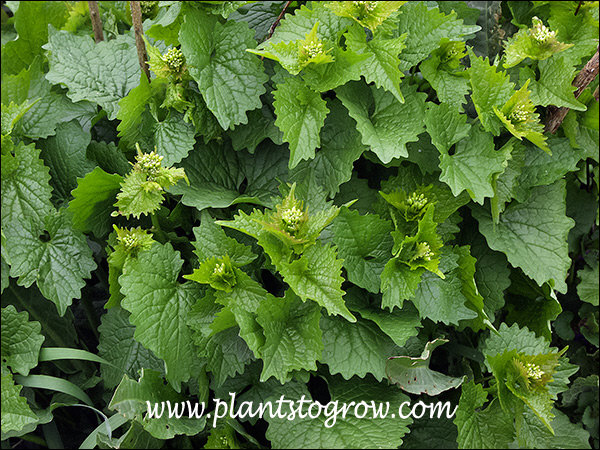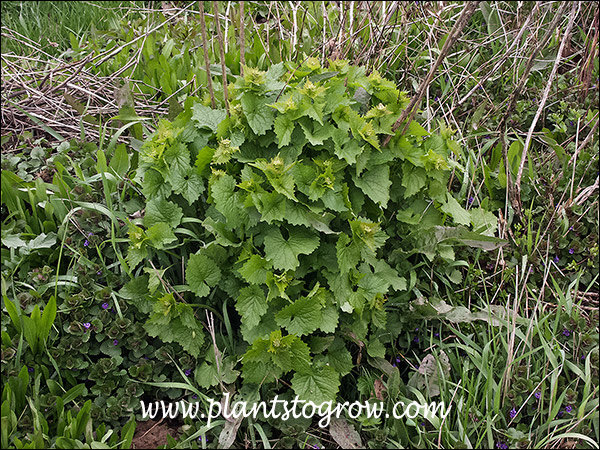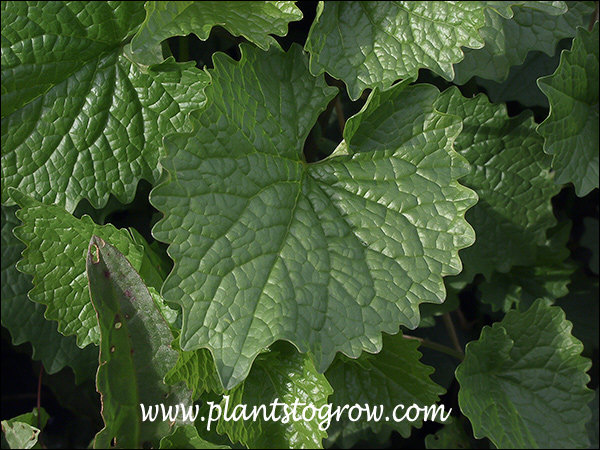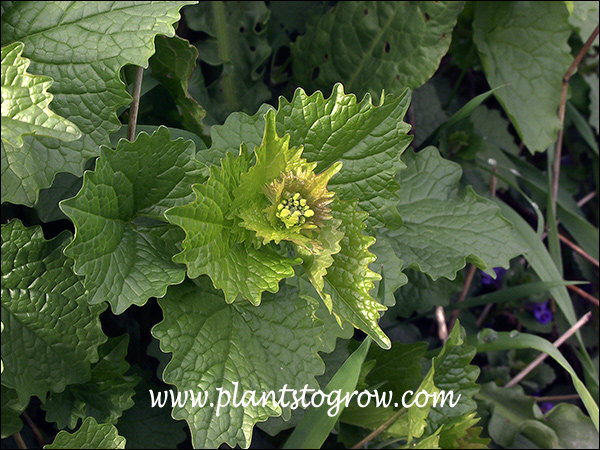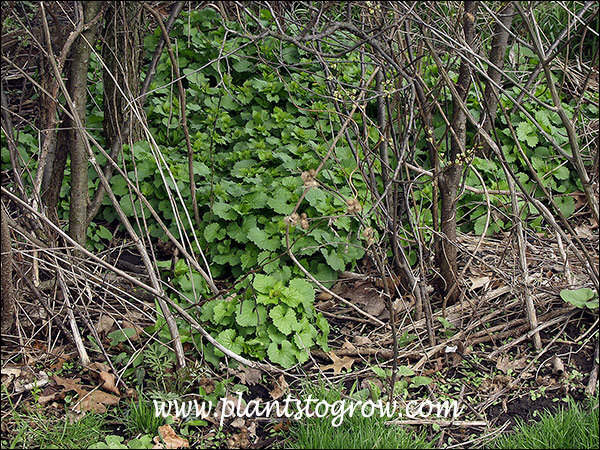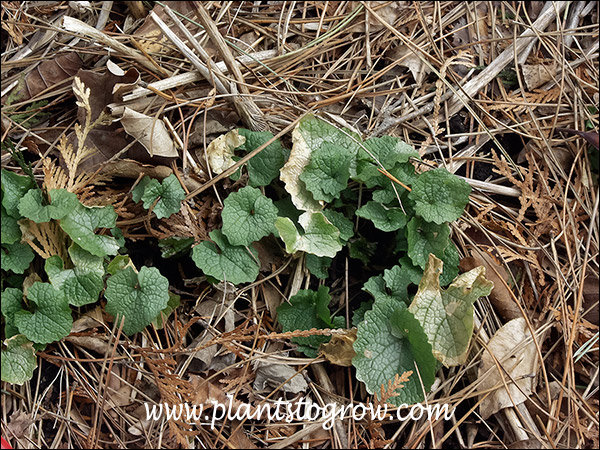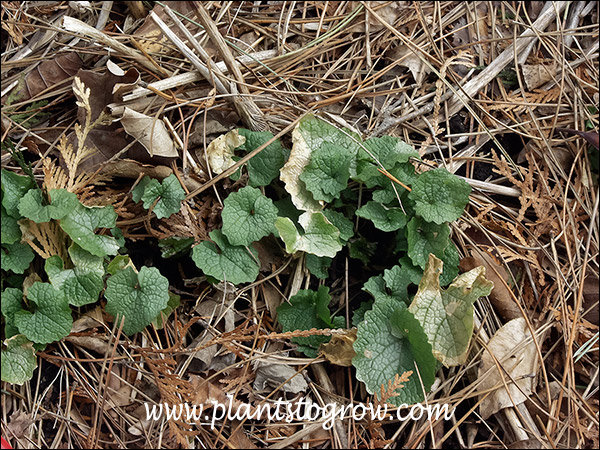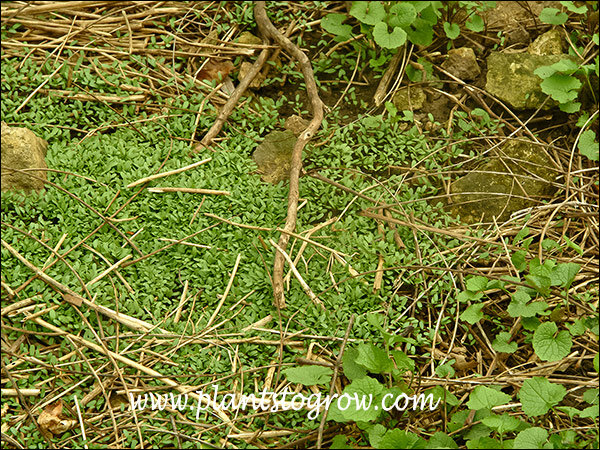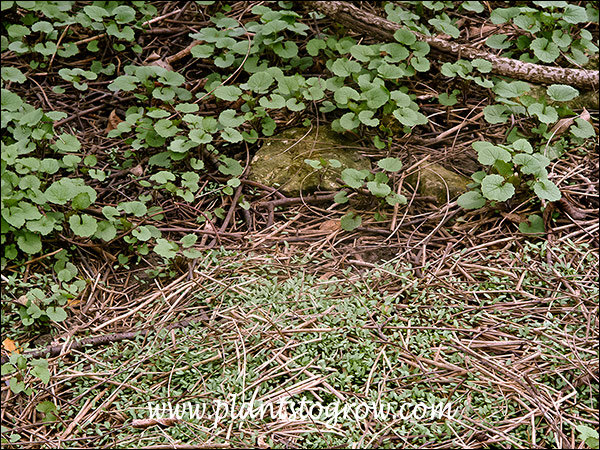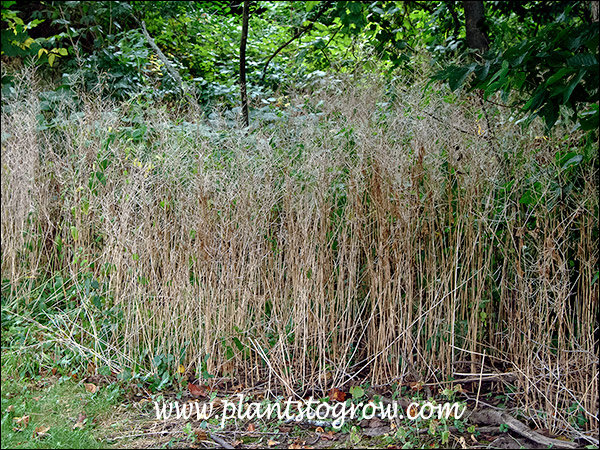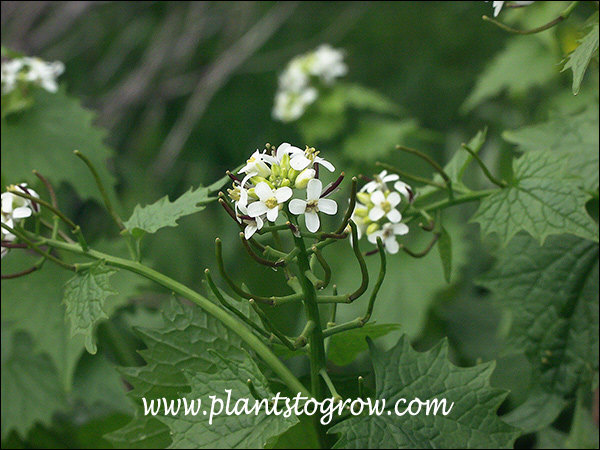| Description | Garlic Mustard is a European plant that was introduced to the USA by early settlers. It was used as a food source and for medicinal purposes. Now Garlic Mustard has become a major invasive weed problem. |
|---|---|
| Plant Type | All Plants, Weeds |
| Sunlight | very adaptable, grows best in shaded areas |
| Moisture | prefers moist, very adaptable |
| Soil & Site | very adaptable, seems to avoid dry |
| Flowers | white, around 1/4" with four petals found on the top of the plant, late May to early June on second year plants |
| Fruit | The seeds are found in long thin capsules over 100 seeds per plant. The capsules start forming soon after flowering. The seeds become viable quickly and are disseminated in early July through August and can remain viable for many years. |
| Leaves | The first year plants reach 2"-6" tall. Second year plants get 1-4' tall with long internodes. This year’s plant will produce the flower stalk and seeds. It than dies leaving tall brown plants. The dark green leaves are rounded to kidney-shaped leaves with scalloped edges. |
| Roots | white, fleshy with a distinct garlic smell when pulled |
| Dimensions | Garlic Mustard is a biennial. The first year plants will form a green carpet of 4-6 inch tall plants. As a second year plant it will reach 1-4 feet tall. |
| Propagation | seeds |
| Misc Facts | Garlic Mustard displaces native woodland vegetation, which in turn disrupts the ecosystem of an area. The thick, dense foliage shades out the native plants and depresses the germination of seeds. |
| Author's Notes | Once established this is a difficult plant to eradicate. When I was an advisor for a student group called "Students To Save The Earth", we pulled out 10's of thousands of these plants over the years in parks and wildlife areas. |
| Notes & Reference | #101-Invasive Plants of the Upper Midwest (Betty Czarapata) |

Cart
